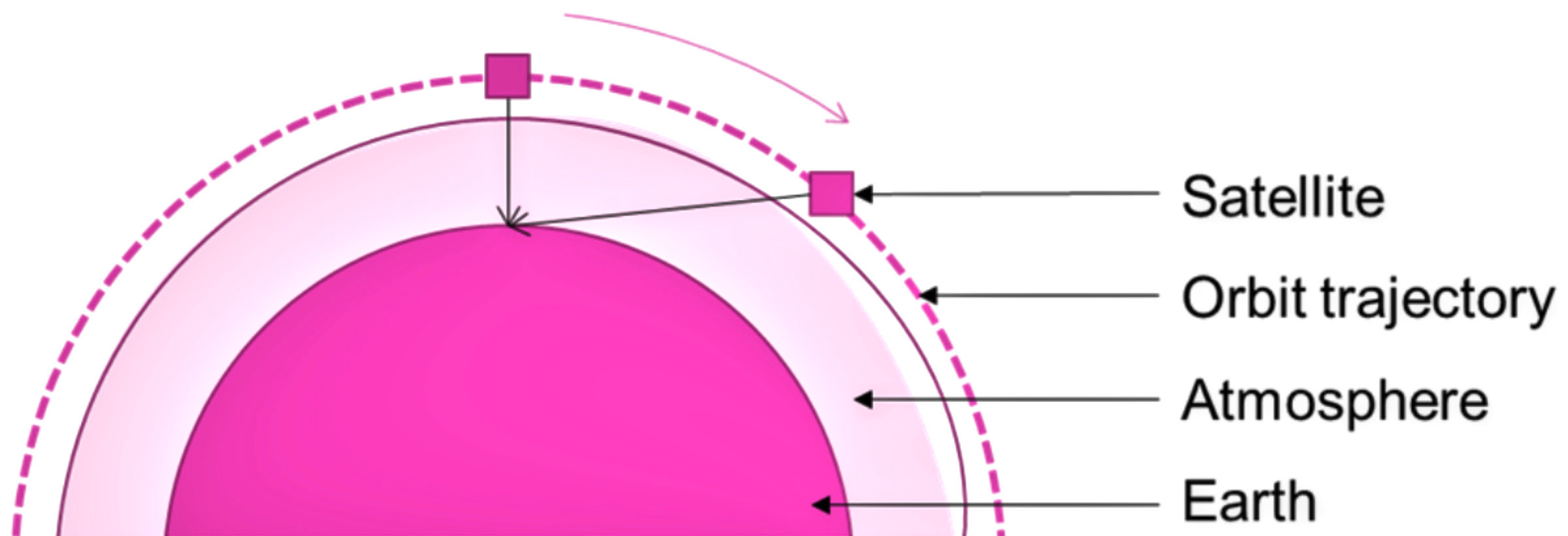Laser communication, a method of transmitting information using light propagation in air and in a vacuum, has witnessed significant advancements over the past few decades. While laser communication has been widely used in various terrestrial and satellite applications, its adoption in space-to-ground optical links has been relatively slower.

However, recent developments have sparked a surge of interest and investment in this technology, propelling it into the forefront of the telecommunications industry. In this article, the reasons behind the delayed market breakthrough of space-to-ground links and the factors contributing to their accelerating adoption today are explored.
Laser communication is also known as Free Space Optics (FSO). This method leverages light to transmit data through the air without the need for physical cables or wires. Since the late
1990s, FSO has been employed as an alternative to traditional communication methods like fiber optics and radio frequencies, offering high bandwidth and enhanced security capabilities.
FSO’s successful implementation in various terrestrial and inter- satellite applications has already demonstrated its reliability, security, and efficiency, from military operations to commercial enterprises. However, when it comes to space-to-ground communication, for a while optical links remained limited to experimental and demonstration stages, with commercialization efforts only recently gaining momentum.
In the 1990s, several entities embarked on the development of laser communication projects recognizing the potential
of light as a vector of information. A significant milestone was achieved in 1995 when JAXA’s GEO satellite, ETS-VI, successfully transmitted a downlink signal that was received at Japan’s National Institute of Information and Communications Technology (NICT) Optical Ground Station in Tokyo
This breakthrough achieved a communication rate of 1 Mbps and marketd an important step forward for laser comms.
Since then, the number of experimentation efforts linking Earth to Low Earth Orbit (LEO) satellites have multiplied.
For instance, in 2020, Sony Computer Science Laboratories (CSL) collaborated with JAXA to establish a bidirectional optical communication link between the International Space Station’s Japanese Experiment Module “Kibo” and the NICT Optical Ground Station.
CSL also joined forces with Kongsberg Satellite Services (KSAT) in 2021 to demonstrate an optical downlink emitted from the ISS and received at KSAT’s commercial optical ground station in Greece.
Interestingly, inter-satellite links using optical communications took off much earlier than space-to-Earth applications. Today, Optical Inter Satellite Links (OISL) are widely deployed within various industries, including telecommunications, defense and Earth Observation (EO) constellations.
SpaceX’s Starlink constellation has become an example in this field since that company’s declaration that each newly deployed satellite, starting from 2022, would be outfitted with a laser communication terminal.
As a pioneer and symbol of the New Space movement, SpaceX has influenced competitors such as OneWeb, which are also planning constellations of LEO satellites with laser communication capabilities. Simultaneously, in Europe, Telesat has outlined the firm’s plans to equip the Lightspeed constellation with OISL terminals by 2023.
The delayed adoption of space-to-ground optical communication can be attributed to a combination of factors.
The historical dominance of radio frequency (RF) communication in the space sector played a significant role. RF communication had been institutionalized since the early days of space exploration has and enjoyed widespread usage.
In fact, the first successful communication from space was made using radio waves by Sputnik 1, the first artificial satellite to reach orbit in 1957, and could be easily detected by radio amateurs across the world. This was followed by the second RF communication from the first U.S. satellite, Explorer 1, in 1958.

Figure 1. Depending on the satellite position, the optical link has to pass through atmosphere layers of various thicknesses Image is courtesy of CAILABS.
Until recently, the establishment of reliable, satellite-to-ground links faced numerous technological hurdles: laser beams emitted by satellites are narrow and highly focused, limiting their coverage to a small area of just a few meters.
This necessitates precise pointing mechanisms for accurate alignment with a ground station. Simultaneously, on the ground side, acquiring light signals from fast-moving LEO satellites presented its own set of significant challenges. Fortunately, technological advancements in Pointing, Acquisition, and Tracking (PAT) systems have effectively addressed these challenges, opening the field of possibilities for laser communications.
To overcome pointing difficulties, telescope mounts inspired by astronomical observations have been used. These mounts are designed to compensate for the Earth’s rotation when observing celestial objects. By accurately determining the positions of the satellite and ground station, these mounts can perform pre- positioning, which is further refined using auxiliary beams called “beacons.”
In addition, advancements in laser and optical amplifier technologies have played a vital role in achieving more robust and reliable long-distance communication.
In contrast to inter-satellite communications, satellite-to-ground links face an additional obstacle: the Earth’s atmosphere. The varying density, temperature and humidity of the atmosphere create turbulence that degrades signal quality. In the case of LEO satellites, the intensity of these technical challenges fluctuates as the satellite passes above the ground station: at the zenith, the speed is higher, and at the horizon, the greater distance crossed by the link increases the impact of atmospheric turbulence. (See Figure 1.)
One solution to mitigate the impact of atmospheric disturbances on satellite-to-ground links lies in the implementation of geographic diversity. This strategy entails establishing multiple Optical Ground Stations (OGS) across a designated area, effectively bypassing the detrimental effects of atmospheric turbulence. To ensure seamless coverage of the entire European region, an estimated network of 10 to 12 strategically positioned and interconnected stations would be required.
Drawing inspiration from the field of astronomy, adaptive optics technology has been adapted for atmospheric turbulence compensation in optical communications. Originally developed to counter the distorting effects of turbulence on observed images in large telescopes, adaptive optics can also be applied to laser communications. However, adaptive optics is primarily used in controlled environments, such as certain astronomy observatories, where environmental conditions can be carefully regulated.
Cailabs, a pioneering company in the field, has harnessed its unique technology called Multi-Plane Light Conversion (MPLC) to mitigate atmospheric turbulence.
Cailabs achieved a groundbreaking milestone by establishing a 10 Gbps, ground-to-ground, laser communication link through a 1 km atmosphere. Furthermore, in partnership with the DLR (German Aerospace Center), Cailabs established a 10 km continuous wave (CW) link, further showcasing the potential of the technology.
Building upon this technological breakthrough, Cailabs has successfully commercialized advanced optical ground stations tailored for space-to-ground laser communications. These stations have the capability to effectively mitigate the historical limitations imposed by atmospheric turbulence.
By actively contributing to the growth of the optical ground segment market, Cailabs aims to drive the development of a broader optical communications ecosystem. Through its innovative solutions, Cailabs is pushing the boundaries of optical communication technology and facilitating high-speed, reliable, and secure data transfer between space assets and ground infrastructure.
Resolving technological limitations is just one aspect that has fueled the remarkable growth of the optical communications ecosystem. The emergence of the NewSpace movement ushered in a rapid transformation of the space market. It was driven by disruptive innovations, the entry of private players and novel approaches to value creation. As a result, the entire network architecture and communication channels had to adapt to these evolving dynamics. The current means of communication are, therefore, no longer able to meet the changing needs, leading to congestion on communication channels with space.
There has been an explosive demand for ultra-high throughput, as well as a critical need for secure, unjammable, and stealthy communications for certain applications. In this context, free-space laser communications have emerged as a reliable solution capable of fulfilling these growing requirements.
With bandwidth surpassing 10 Gbps, laser communications overcome the limitations of conventional systems, which typically operate in the range of a few Gbps. Moreover, their narrow and difficult-to-detect beam enables more secure communications, offering enhanced stealth and resistance to jamming.
Furthermore, one of the significant challenges in modern space communications revolves around the scarcity of RF channels, resulting in congestion and imposing burdensome licensing procedures. This limitation becomes even more pronounced for small businesses that are striving to compete for spectrum licenses, particularly in the context of 5G development.
This has intensified the pressing need for alternative solutions. In this regard, laser communications are a fitting response as they operate in a license-free manner, circumventing the challenges associated with RF channel scarcity and licensing procedures.
Another advantage of laser communications is the technology’s compatibility with ultra-high-capacity, terrestrial telecom technologies, capable of achieving data rates in the range of several Tbit/s. Leveraging the technological maturity of the telecommunications industry, lasercoms benefit from synergies with these advanced terrestrial technologies.
The potential of laser communications has attracted public and private players which have initiated various new projects. Demonstrations of laser communication capabilities are being conducted and laser components are being integrated into major defense programs and private initiatives. Notably, DARPA, renowned for its role in developing what became the internet,
is providing financial support for the deployment of optical communication terminals on scheduled satellites under its Space- Based Adaptive Communications Node (Space-BACN) program.
Europe is also planning to incorporate optical communications into its independent data relay project called the European Data Relay Satellite System (EDRS), a collaborative endeavor between ESA and Airbus.
The ecosystem encompassing laser communications includes manufacturers of Laser Communication Terminals (LCTs), which have made significant advancements thanks to the flourishing inter-satellite communication sector. Additionally, this market comprises the optical ground segment, wherein entities such as Cailabs are contributing to the reception, processing and transmission of optical signals from satellites.
The demand for robust and reliable space communication solutions has driven the resurgence of optical communications. The convergence of market developments, breakthrough technologies and the pressing need for enhanced capabilities has propelled laser communications to the forefront. As shown by projects such as Cailabs’ optical space-to-ground upcoming link demonstration project, Keraunos, the industry is actively exploring the immense potential of laser communications to meet the evolving demands of modern space connectivity, thereby confirming that this technology has a great future.

As shown by projects such as Cailabs’ optical space-to-ground upcoming link demonstration project, Keraunos, the industry is actively exploring the immense potential of laser communications to meet the evolving demands of modern space connectivity, thereby confirming that this technology has a great future.
www.cailabs.com
References
https://artes.esa.int/european-data-relay-satellite-system-edrs-overview


